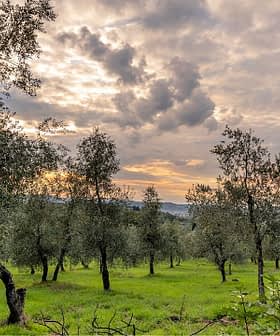To Reduce Food Waste, Tweak the Food Supply Chain, Researcher Says
Research from Sweden says there are certain improvement actions wholesalers, producers and retailers can take to reduce "criminally" huge food waste in Europe and its impact on the environment.
Each year, around 88 million tons of food are discarded in Europe with ensuing costs estimated at €143 billion, says the website of the European Commission. This is a tremendous waste when 795 million people around the world are experiencing food insecurity.
In the developed world, it is primarily the well-fed inhabitant that throws away food. There is, however, another culprit that comes in close second: the food supply chain and its three stages of production, wholesaling and retailing, as Kristina Liljestrand, an expert in sustainable food logistics and researcher at Chalmers University of Technology, Sweden, revealed.
“By tweaking the logistics systems, we can ensure that the food maintains good quality and lasts as long as possible when it reaches the store,” Liljestrand said.
In her research titled “Reducing the Environmental Impact of Food Products Logistics Systems,” Liljestrand attempted to study how both food waste and the environmental impact at the food-supply-chain level can go down. Through an extensive study among Swedish producers, wholesalers and retailers, she identified nine improvement actions by dividing them into four types.
First, there is “Visualization,” which concerns understanding where and why environmental impact occurs with the help of frameworks, tools, and processes. In the study, it mainly involved wholesalers and retailers,” said Liljestrand.
Second comes “Flow.” “Changes to the flow imply long-term adjustments to the material or information flow in order to reduce the environmental impact of the logistics systems and, coincidentally, make the logistics systems more efficient.
“Such changes were often made by joint decision-making between the stages in the food supply chain. These solutions were often traditional logistics operations that the actors in the study executed in order to reduce food waste. For example, good solutions were collaborative forecasting and make-to-order flows, which applied to all three groups of actors,” explained the researcher.
Third, the food supply chain ought to think of “Changing Performance Priorities.”
“Changing performance priorities is linked to altering logistics performance variables used to describe the objectives of the logistics systems — that is, to questioning the effectiveness of logistics systems. The main performance variables that were altered in order to reduce food waste were assortment, service level and lead times.
“One example is to lower demands on assortment or service level during limited time periods with large amounts of food waste, for example at the end of a season (e.g. Christmas hams at Christmas Day). This group of solutions was mainly applied by wholesalers and retailers.”
Last, Liljestrand said, “Emergency solutions are applied in response to an immediate risk of food waste not mitigated by other identified solutions. This could, for example, be done by reducing the price of food products with short shelf lives. Emergency solutions were used by all stages in the food supply chain.”
In the second part of her research, Liljestrand focused on the environmental impact of the activities of the food supply chain. She examined aspects like the load factor (the optimal use of space in pallets, crates and trucks) or the proportion of intermodal transports. This resulted in two frameworks that provided great help in the quest to reduce transport emissions.
“The Transport Portfolio Framework (TPF) is a tool for supporting decision-making that scrutinizes logistics systems from the perspective that they encompass many shipments with different characteristics that impose requirements for transport’s impact on climate. Actors, therefore, need to understand which shipments have a strong potential for improving the key variables of modal split and load factor.”

Kristina Liljestrand (Photo Caroline Örmgård)
“The Matrix for Evaluating Improvement Actions (MEIA) evaluates how different improvement actions affect transport’s impact on climate and transport costs.”
The Chalmer Technology thesis found that both frameworks complement each other: “The TPF can be applied when actors want an overview of their entire logistics system, while the MEIA can be applied when they want to compare improvement actions,” continued Liljestrand.
Her research clearly showed that there is money to be made by increasing the load factor and focusing more on intermodal transport, and that collaboration plays a key role in how food is distributed.
“Intermodal transport is thought to decrease both transport costs and impact on climate, since a large part of all transport, dubbed ‘the long leg,’ is carried out at high capacity, which makes it cost-effective and environmentally beneficial to reduce each loading unit’s impact on climate.”
“On the other hand, an important finding of the study was that no solution involved only one stage in the food supply chain. Three of my logistics solutions transcend all three supply chain stages, whereas the other six solutions include two stages.
“My findings imply that collaboration is important and that reducing food waste without collaboration is difficult,” concluded Liljestrand, who hopes that her research can inspire the various actors in the food supply chain to understand that in order to successfully reduce food waste and tackle environmental challenges, they need to collaborate.








